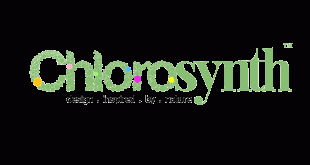Supernitro – paving the way for the next stage in the development of future treatments for acute pulmonary hypertension.
The last of 38 study participants were treated with Supernitro on 18 May, and the substance has shown good safety and tolerability.
No unexpected side effects have been reported. At a higher dose and longer treatment, the expected side effects have been noted in line with the substance mechanism of action – vasodilation through the release of nitric oxide (NO).
The results pave the way for the next step in Attgeno’s development programme, where patients suffering from acute high blood pressure in the lungs, so called acute pulmonary hypertension (APH) following heart surgery, will be treated with Supernitro.
Attgeno AB develops innovative NO donor drugs and the company’s drug candidate Supernitro is primarily intended as a treatment for seriously ill patients who are receiving intensive care by targeting the release of the vasodilating NO to pulmonary circulation. In this way Supernitro has the potential to counteract vasoconstriction in pulmonary circulation which, among other things, risks affecting patients who are undergoing heart surgery or have severe infections which give rise to acute pulmonary hypertension (APH).
The primary purpose of this study, which is the first in which Supernitro was given to humans, was to evaluate the tolerability and safety of intravenous infusion, and all study participants received both Supernitro and a placebo. The side effects that were observed were expected and in accordance with the substance mechanism of action. The conclusion from Attgeno is that the safety of Supernitro is sufficient to now allow continued studies with Supernitro in patients with APH.
“It has been exciting for us to be part of Attgeno’s study as the effect of Supernitro by intravenous infusion can happen very quickly, which is a potential benefit for use in intensive care. Previously, releasing NO to the pulmonary circulation by inhalation has been tested extensively, but without producing a sufficient effect on the pulmonary vessels in pulmonary hypertension. Supernitro is especially promising as it tackles the problem from the ‘right’ direction, i.e. that the NO from the substance is released from the vessel side, and it is also really potent,” explains anaesthesiologist Folke Sjöberg, who is medically responsible for the study at CTC Clinical Trial Consultants in Uppsala.
“On behalf of Attgeno, I want to express our immense gratitude to the people who have participated in the study and to the clinical team at CTC Clinical Trial Consultants led by Folke Sjöberg who, despite an ongoing pandemic for most of the study, have made it possible to conduct this relatively invasive study. Their efforts have contributed significantly to the development of Supernitro, and in expanding the knowledge of NO donors”, says Attgeno’s Chief Medical Officer (CMO) Christofer Adding.
This now completed Phase I study confirms that Supernitro is a potent substance that works by releasing NO in the pulmonary blood vessels. The results from the study make the next step possible, in accordance with the goal that Attgeno has worked towards – to be able to study the effect of Supernitro in patients who have suffered APH following heart surgery
 Newspatrolling.com News cum Content Syndication Portal Online
Newspatrolling.com News cum Content Syndication Portal Online





